URGENT!
Due to the weather, we are experiencing intermittent power outage and loss of internet. Please expect delays and or rescheduling of appointments during this time. We will reach out to you as soon as we can. Stay warm and stay safe!
Chimney fires are no joke. Each year there are approximately 25,000 chimney fires in the United States. These fires cause over $100 million in property damages and can lead to injury and even death. A fast-burning chimney fire can quickly cause your chimney liner to expand and crack, exposing and igniting combustibles in your home. This can happen in an instant so it’s important to know what causes these fires, how to prevent them, and what you should do if you have one.
With over 17 years of experience providing the great Houston area the highest quality chimney, fire place, and dryer vent services, Lords Chimney has a wealth of chimney wisdom to share with you.
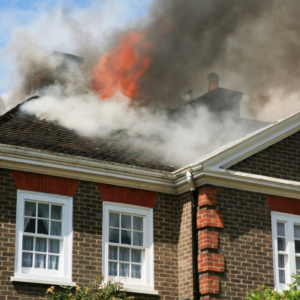 The most common cause of a chimney fire is creosote accumulation in an unclean chimney. When you have a fire in your fireplace, you are causing a chemical reaction. It is this reaction that turns wood to ash and sends byproducts up the chimney. Two of those things that result from these byproducts are soot and creosote. When you see black and sometimes even greasy-looking spots on the masonry in your fireplace, you are looking at soot and creosote.
The most common cause of a chimney fire is creosote accumulation in an unclean chimney. When you have a fire in your fireplace, you are causing a chemical reaction. It is this reaction that turns wood to ash and sends byproducts up the chimney. Two of those things that result from these byproducts are soot and creosote. When you see black and sometimes even greasy-looking spots on the masonry in your fireplace, you are looking at soot and creosote.
Soot needs to be cleaned, but the real danger lies in the creosote. Creosote is a black or brown substance that can be flaky or sticky, tar-like or shiny – and the more you burn, the more creosote can build up. If it is regularly removed, creosote comes off easily. If it is allowed to build up, creosote can harden and glaze, becoming an ever bigger danger to the chimney owner.
Creosote is extremely combustible. It will ignite at 451 degrees. Many fireplace fires will burn at 450 degrees which means that it doesn’t take much to turn that creosote into a burning chimney fire that threatens your chimney, house, and life. Because it is a natural byproduct of burning, creosote is going to accumulate over time, but there are ways to slow its accumulation and drastically lower the risk of fire in your chimney.
What can you do to slow down creosote accumulations?
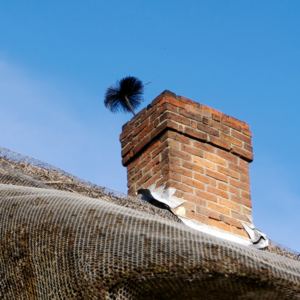 The easiest way to slow the buildup of creosote is to make sure the fuel of your fire burns efficiently. This means that properly dried and seasoned firewood is your best choice when creating that cozy fire. Moisture in your firewood creates an inability to burn completely leaving wasteful byproducts traveling up your chimney and sticking to the walls.
The easiest way to slow the buildup of creosote is to make sure the fuel of your fire burns efficiently. This means that properly dried and seasoned firewood is your best choice when creating that cozy fire. Moisture in your firewood creates an inability to burn completely leaving wasteful byproducts traveling up your chimney and sticking to the walls.
Freshly chopped firewood will usually have around 50% moisture content. It is heavy and sometimes you will even be able to see some green coloring in the wood itself. The firewood you burn should have a moisture content of no more than 25%.
Before burning, do a quick visual and audible inspection of your wood. It should be light in color and light in weight with no visible green coloring. When you knock two pieces together you should hear a clear clunk rather than a low, dull, thud. These visual and audible cues can let you know whether you are going to be quickly adding to your creosote buildup or efficiently burning the safest fuel.
Your chimney should have a liner on the inside walls that is made to protect the chimney from creosote buildup. Liners improve the airflow and efficiency of your fireplace which means a safer home for you. Make sure your liner is inspected every year.
Our team at Lords Chimney are experts at sizing, installing, and caring for chimney liners. A simple phone call to one of our experts at Lords Chimney is the best way to make sure your liner is doing everything it’s meant to do.
Make sure you are taking care to keep that chimney damper open along with any doors that might be on the front of your fireplace. Your chimney was likely installed with a specific airflow in mind. Check the operator’s manual and make sure you’re using your fireplace how it was built to be used.
The best way to make sure your chimney is safe is by having a chimney technician from Lords Chimney sweep and inspect it. Our experts are certified, equipped, and trained to get rid of that creosote and leave your chimney clean and ready to use. We are happiest when you are safe and happy. There is simply no better way to keep that creosote at bay.
While creosote is the most common instigator of chimney fires it is important to keep an eye out for things in your chimney that just shouldn’t be there. Because it is dry, warm, and protected from wind, an unprotected chimney can quickly collect blowing debris and become home to unwanted animals.
The easiest way to avoid debris and animal homes clogging up your chimney is to make sure that you have a properly fitting chimney cap installed. A chimney cap is great at keeping out unwanted creatures, leaves, sticks, and other rooftop invaders. It also allows air to continue to flow properly. As your go-to chimney experts, Lords Chimney is ready to install the perfect cap protection for your chimney.
Lords Chimney is certified by the Chimney Safety Institute of America (CSIA), and we have established a reputation in our community for providing the most professional chimney services you can find. Your safety is important to us. Call or book online today to schedule an appointment with one of our chimney technicians and get your chimney clean and healthy.
If you’ve ever noticed any gummy-looking black stuff in your chimney, chances are it’s creosote. This dark residue is a byproduct of burning wood and it sticks to the inner walls of chimneys. It can be either flaky, shiny, or sticky.
And since creosote forms through burning wood, it is naturally prone to catching on fire. As such, the Chimney Safety Institute of America (CSIA) highlights its high combustibility as a primary safety concern.
Yes! Creosote is a combustible byproduct that can easily catch fire. And once it ignites, it can quickly spread through the chimney, causing the liner to break down and the masonry to crumble and crack. This means any future fires you light will be more prone to escape the chimney walls and enter your home.
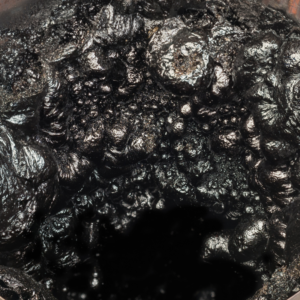 Creosote can also accumulate until it clogs the flue. This blocks the free flow of gases and smoke causing problems with drafting and airflow to develop. This hinders efficiency levels, and it puts you more at risk of being exposed to hazardous fumes, like smoke from your fires or even carbon monoxide – a deadly and extremely hard-to-detect gas.
Creosote can also accumulate until it clogs the flue. This blocks the free flow of gases and smoke causing problems with drafting and airflow to develop. This hinders efficiency levels, and it puts you more at risk of being exposed to hazardous fumes, like smoke from your fires or even carbon monoxide – a deadly and extremely hard-to-detect gas.
Considering the health and safety hazards that creosote poses, regular chimney sweepings become a critical obligation. Professional chimney sweeps have the right equipment to assess any chimney’s condition and address creosote buildup before it becomes a problem.
While creosote isn’t unavoidable, there are ways to effectively reduce accumulation in your flue:
Most chimney fires move slowly and don’t produce a lot of noise, which means you may have had one without noticing. The CSIA identifies the following signs that your chimney could have survived fire before:
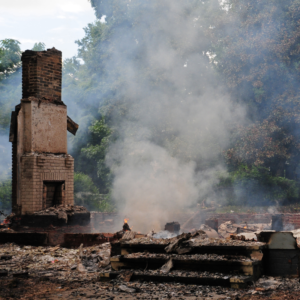 Black or dark-brown byproducts in chimney walls or fireplace
Black or dark-brown byproducts in chimney walls or fireplaceIf you do notice that a chimney fire is currently occurring, exit the home immediately and get in touch with your local fire department as soon as possible. In addition, as you are leaving your home, the CSIA suggests closing the door behind you if you can. The goal is to prevent any more air from feeding the flames until the fire department arrives.
Even if you believe that your chimney is functioning correctly, there could be hazards hiding away, ready to cause issues. Scheduling a chimney inspection is one way to gain peace of mind, during which we can determine if you need a sweeping.
Creosote is a dangerous byproduct that you might fail to notice immediately. This material is combustible and can cause health and fire hazards in your home. To effectively avoid this issue, we suggest getting in touch with one of our CSIA certified chimney sweeping experts to inspect and clean your chimney. Schedule an inspection today!
Keeping the focus on safety
Our clients’ safety is important to us, and at Lords Chimney, we want to do everything we can to help you minimize the possibility of fire hazards in or around your chimney system, from regular chimney maintenance to necessary repairs. That also includes helping you develop short-term and long-term fire safety plans that add up to a cleaner and better-performing system.
Maintenance Sets The Stage

This list of smart practices will help you continue using your heating appliance as safely as possible.
Every Time You Use Your Fireplace
Use the right fuel
Wet or green wood results in an increase in creosote in your flue, and more creosote means a bigger chance of creosote ignition. Use kiln-dried or seasoned firewood (or make sure you dry your own wood for at least a year before using it) — that helps you achieve the optimum small, hot fire, creating the lowest levels of creosote. Stay away from burning trash, Christmas trees, cardboard boxes or anything else that isn’t seasoned firewood, too — and never ever try to speed up lighting your fire by using any kind of flammable liquid.
Don’t leave your fire unattended
If you’re burning wood, it takes a while for the fire to thoroughly extinguish. Don’t leave a smoldering fire alone — if sparks or embers get out of the firebox or another problem arises, you need to be there to handle it.
Use a spark screen
Fireplace screens are affordable and useful — placed in front of the fire, they can create a barrier between flames/embers and your living area and the people and pets in it.
Keep things clean
Make sure you clean wood ash regularly, in the right way: Deposit ash in a metal bucket, and allow it to cool completely before disposing of it a safe distance away from your home. Whatever fuel you’re burning, keep the area around your fireplace or stove clean — keep a good distance between the appliance and anything flammable, from furniture and window coverings to decorative items.

Things You Should Schedule Annually
Chimney sweeping
Creosote will build up as you use your wood fireplace or stove, and it needs to be regularly removed from your flue for both safety and performance reasons. A cleaner flue is a safer and a more efficiently venting flue, and Lords Chimney can help.
Chimney inspections
If something goes wrong in your chimney system, you want to know about it — damaged parts and components can lead to leaks and water damage, dangerous carbon monoxide leaks and fire hazards. So keeping up with your recommended annual chimney inspection is important.
If a cracked flue liner, third stage creosote or any other issue is limiting your chimney’s safety and efficiency, Lords Chimney can find the problem and suggest and complete the work necessary to fix it.
Don’t Forget About Your Dryer Vents!
We talk a lot about fire safety associated with fireplaces, stoves and chimneys, but your dryer vent needs your attention too. Lint-clogged dryer vents can become a serious fire hazard — according to estimates from the National Fire Protection Association, dryers or washing machines were involved in nearly 17,000 home fires in 2010, and the most prominent cause of those fires was a failure to clean.
As you use your dryer, lint slowly builds up along the ducts, and over time, that build-up can begin to constrict the vent. That blockage allows heat to build up, and since lint is extremely flammable, that heat can cause it to ignite.
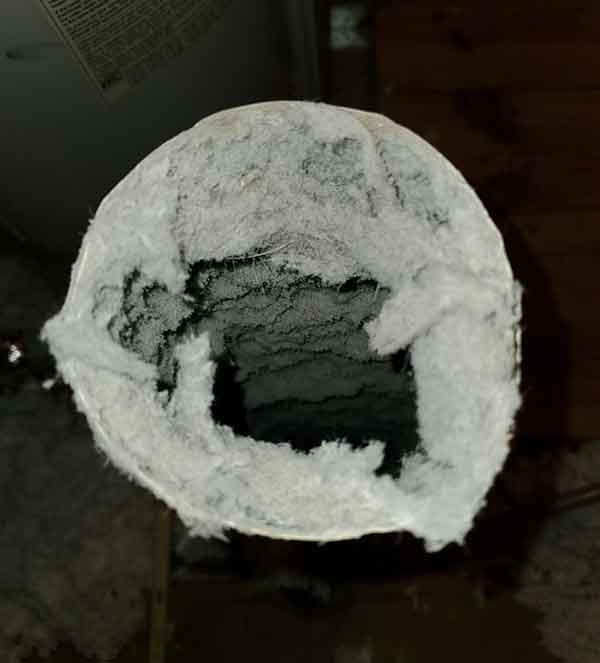
Keeping your dryer vents clean limits that possibility — and Lords Chimney can help with dryer vent cleaning services.
If you have any questions about safer fireplace, stove and chimney practices – or dryer vents – Lords Chimney is always here to help. Just give us a call!
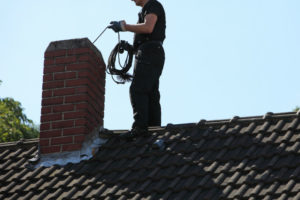 In the hustle and bustle of our day to day lives, it can be easy to let minor home maintenance go by the wayside. No matter how frequently or infrequently your use your fireplace, however, it is important to have it swept and inspected at least once per year. Because of this, many customers find it easiest to forward schedule their future chimney sweeping appointments.
In the hustle and bustle of our day to day lives, it can be easy to let minor home maintenance go by the wayside. No matter how frequently or infrequently your use your fireplace, however, it is important to have it swept and inspected at least once per year. Because of this, many customers find it easiest to forward schedule their future chimney sweeping appointments.
Forward scheduling is as easy as setting your next appointment at the time of your current appointment. While most of us are used to doing this for annual physicals or dental checkups, it can also be done for your chimney services! Forward scheduling your chimney sweeping allows you to pick the date and time for you next services and “set it and forget it!”
Although it may seem odd to schedule chimney maintenance six months – or more – in advance, there are a number of advantages to forward scheduling your sweeping appointment.
Regular yearly chimney sweepings and inspections are the best way to keep your fireplace and chimney burning safely and efficiently. Chimney sweepings remove soot, ash, debris, blockages, and the harmful and flammable byproduct of combustion creosote from the flue. Sweepings also help you get the most out of your fireplace by extending its lifespan. Likewise, chimney inspections can be used to help evaluate efficiency, look for signs of damage or deterioration, and uncover the cause of long-term chimney problems such as draft issues or leaks.
“A chimney inspection is like an annual dental check-up,” says Chimney Safety Institute of America Director of Education Ashley Eldridge. “It’s preventative maintenance that helps minimize potential hazards.”
With family, friends, jobs, kids, school, and more, it can be easy to forget to schedule your annual chimney sweeping. By forward scheduling your future appointments you can rest assured your chimney will be professionally maintained year after year. For more information on forward scheduling or to schedule your next chimney sweeping, contact Lords Chimney today.
Every time you burn wood in your fireplace or wood stove, condensation forms on your chimney’s flue. That condensation forms a dark, tar-like, highly combustible substance called creosote. When creosote builds up in your chimney, it can lead to a damaging and dangerous chimney fire, or it can force carbon dioxide back into your home, endangering your family.
Creosote sweeping logs promise a solution. They claim to reduce creosote buildup in your chimney simply by burning them in your chimney. Some such logs carry the seal of approval of the Chimney Safety Institute of America (CSIA), but even the CSIA acknowledges that the logs are not a replacement for your annual chimney sweeping and inspection by a CSIA-certified chimney sweep.
Creosote sweeping logs work by sending chemicals up your chimney that react with the creosote, causing it to flake away and fall back down your chimney to your firebox, where it either burns up or can be swept away. At best, the logs only remove up to 60 percent of the creosote from you chimney over a 15-day period. That means that creosote still can build up to dangerous levels within your chimney, blocking smoke from leaving your chimney and potentially igniting a chimney fire.
Additionally, many fireplaces aren’t a straight vertical channel. That means creosote can fall to and gather on your chimney’s horizontal surfaces, where it can build up. If your chimney is a straight vertical line, the creosote that falls into the firebox can cause flare ups that can harm your hearth or someone standing near it.
Your annual chimney sweeping is more than just a cleaning. Your certified chimney sweep also inspects your chimney for structural damage, water leaks, crumbling mortar, and other problems. A creosote sweeping log simply can’t help you identify and solve problems with your chimney. Missing your annual chimney inspection gives small problems, like a minor leak, time to grow into a major problem that potentially will be expensive to repair.
More importantly, your certified chimney sweep looks for problems that could lead to a chimney fire or carbon monoxide poisoning. That includes animals that have nested in your chimney or chimney fires that have gone undetected.
While the CSIA recognizes that creosote sweeping logs can be a valuable piece of chimney maintenance, eliminating some creosote in between professional chimney sweepings, replacing your annual chimney sweeping and inspection with a creosote sweeping log is dangerous both for your home and your family. If you’re overdue for your annual chimney sweeping and inspection, call the CSIA-certified chimney sweeps at Lords Chimney. We’ll make sure that your chimney is creosote-free and ready to burn safely this winter.